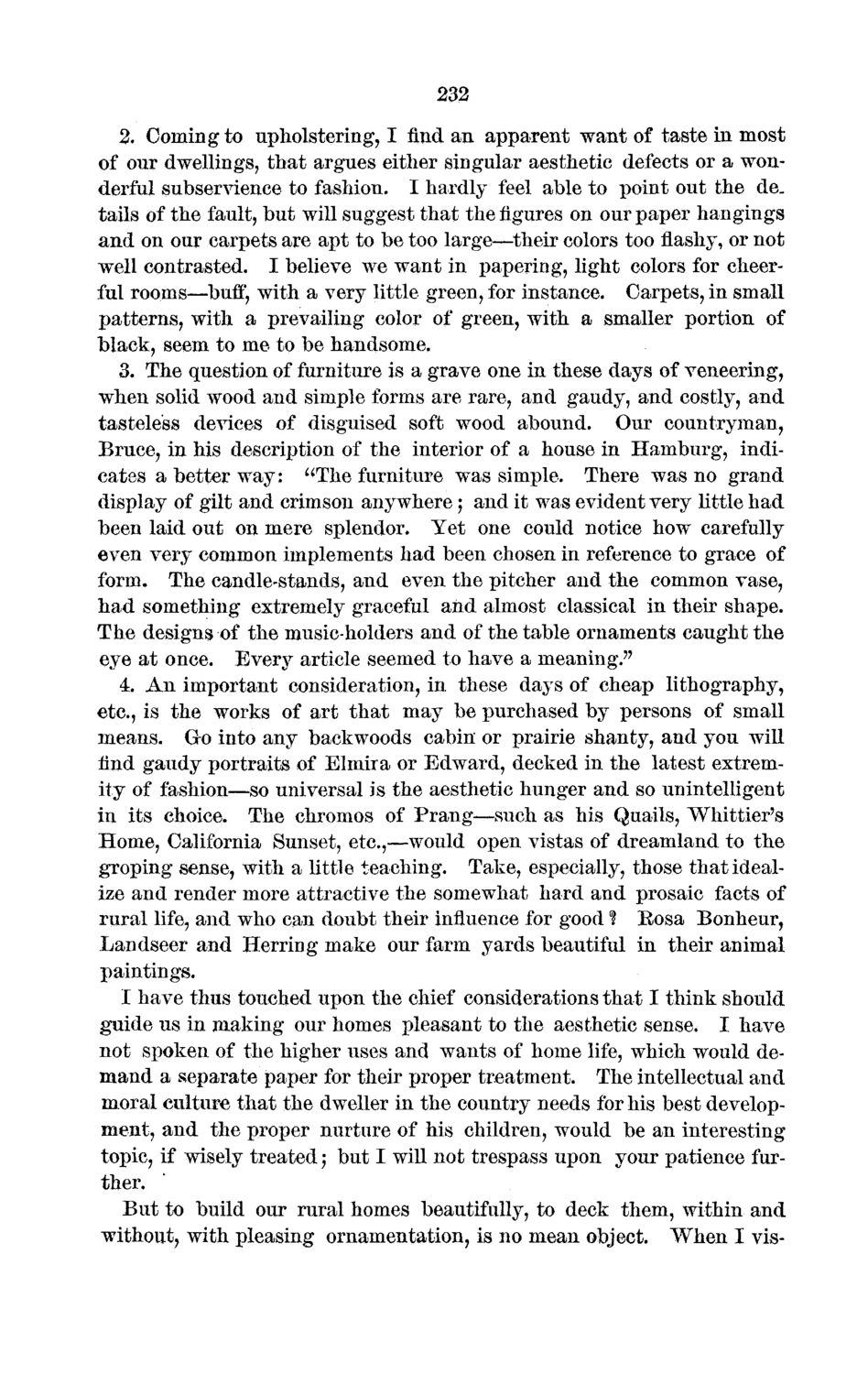| |
| |
Caption: Board of Trustees Minutes - 1872
This is a reduced-resolution page image for fast online browsing.

EXTRACTED TEXT FROM PAGE:
232 2. Coming to upholstering, I find an apparent want of taste in most of our dwellings, that argues either singular aesthetic defects or a wonderful subservience to fashion. I hardly feel able to point out the details of the fault, but will suggest that the figures on our paper hangings and on our carpets are apt to be too large—their colors too flashy, or not well contrasted. I believe we want in papering, light colors for cheerful rooms—buff, with a very little green, for instance. Carpets, in small patterns, with a prevailing color of green, with a smaller portion of black, seem to me to be handsome. 3. The question of furniture is a grave one in these days of veneering, when solid wood and simple forms are rare, and gaudy, and costly, and tasteless devices of disguised soft wood abound. Our countryman, Bruce, in his description of the interior of a house in Hamburg, indicates a better way: "The furniture was simple. There was no grand display of gilt and crimson anywhere; and it was evident very little had been laid out on mere splendor. Yet one could notice how carefully even very common implements had been chosen in reference to grace of form. The candle-stands, and even the pitcher and the common vase, had something extremely graceful and almost classical in their shape. The designs of the music-holders and of the table ornaments caught the eye at once. Every article seemed to have a meaning." 4. An important consideration, in these days of cheap lithography, etc., is the works of art that may be purchased by persons of small means. Gro into any backwoods cabin or prairie shanty, and you will find gaudy portraits of Elmira or Edward, decked in the latest extremity of fashion—so universal is the aesthetic hunger and so unintelligent in its choice. The chromos of Prang—such as his Quails, Whittier's Home, California Sunset, etc.,—would open vistas of dreamland to the groping sense, with a little teaching. Take, especially, those that idealize and render more attractive the somewhat hard and prosaic facts of rural life, and who can doubt their influence for good ? Rosa Bonheur, Landseer and Herring make our farm yards beautiful in their animal paintings. I have thus touched upon the chief considerations that I think should guide us in making our homes pleasant to the aesthetic sense. I have not spoken of the higher uses and wants of home life, which would demand a separate paper for their proper treatment. The intellectual and moral culture that the dweller in the country needs for his best development, and the proper nurture of his children, would be an interesting topic, if wisely treated; but I will not trespass upon your patience further. But to build our rural homes beautifully, to deck them, within and without, with pleasing ornamentation, is no mean object. When I vis-
| |